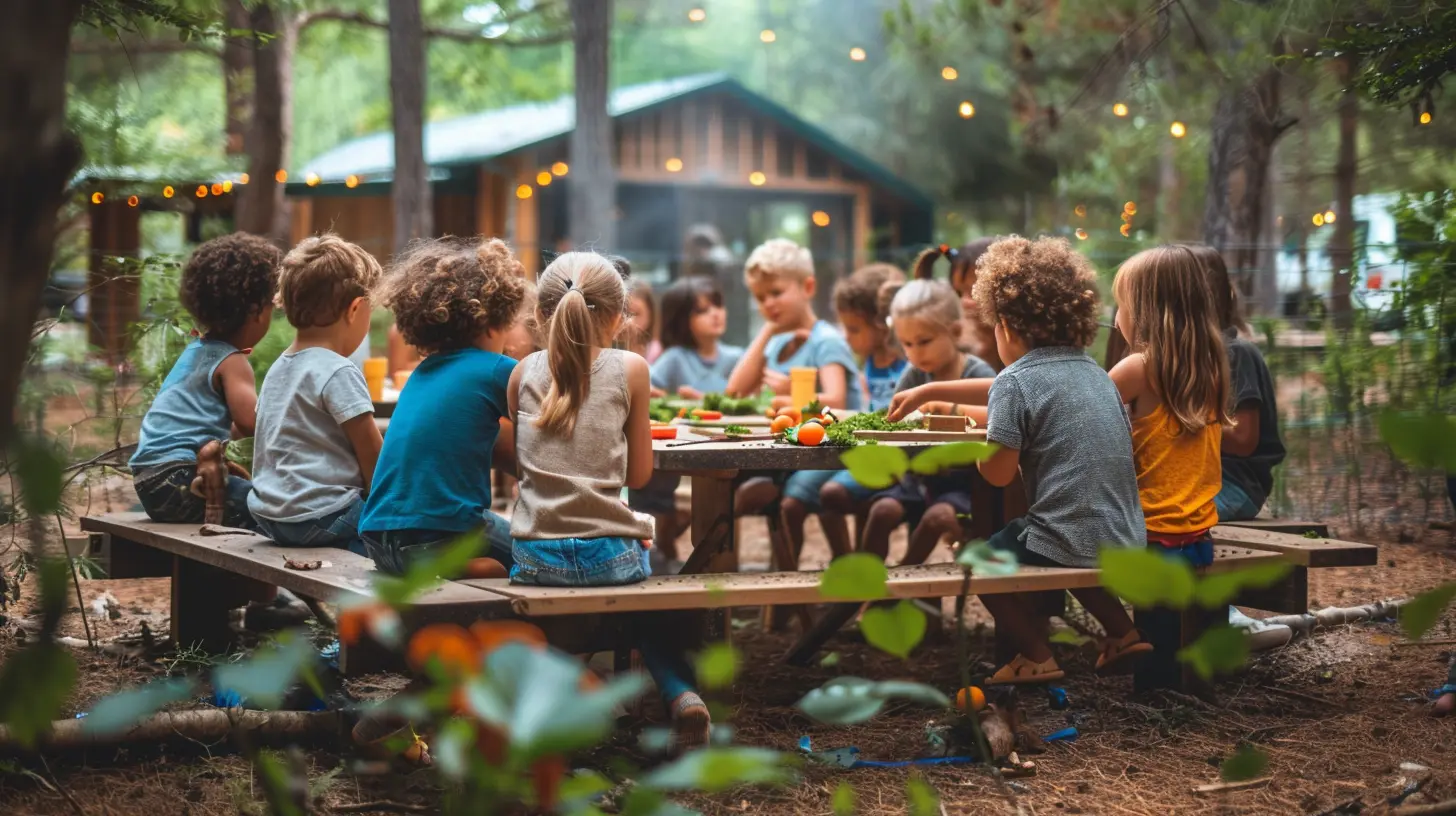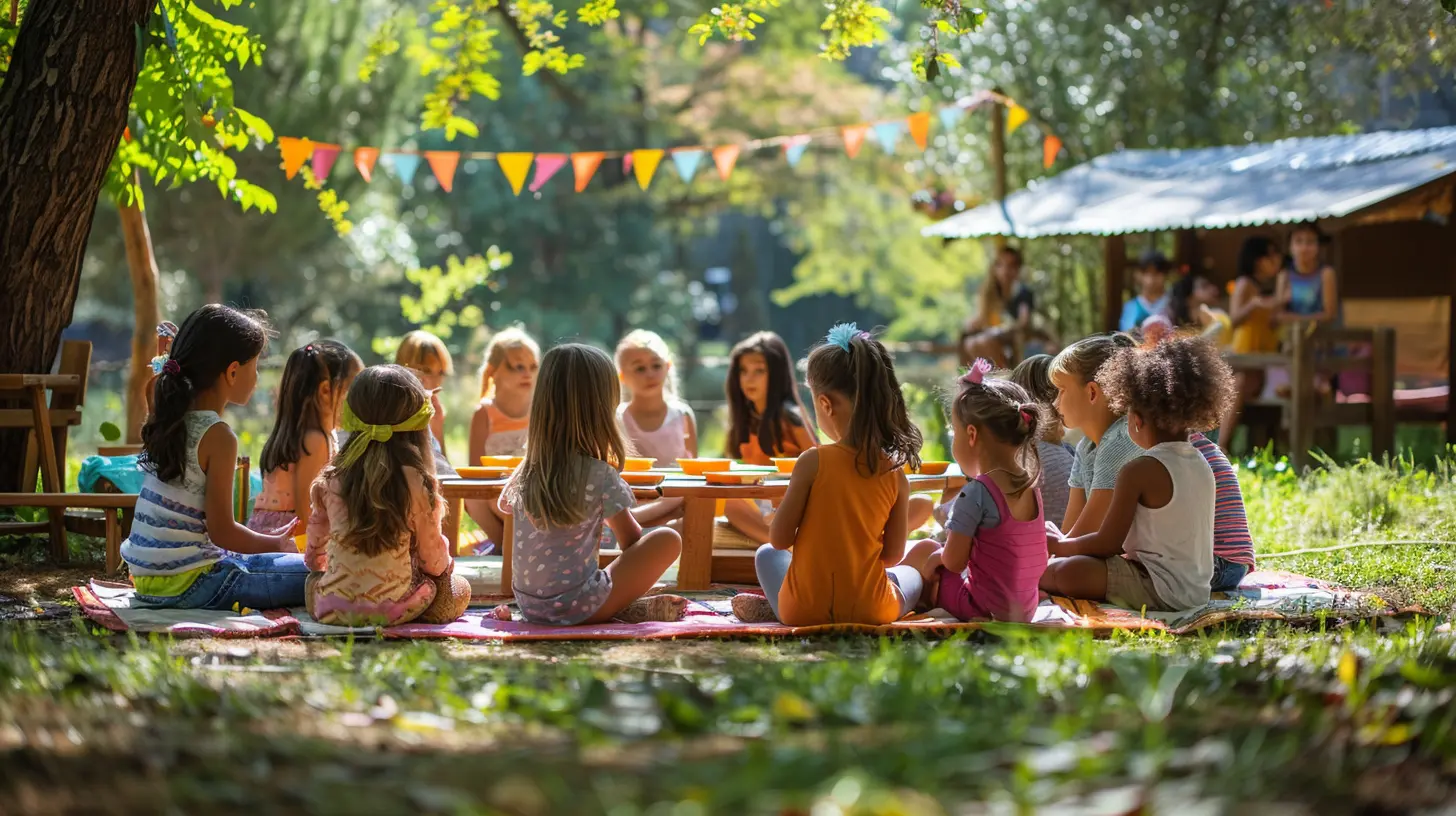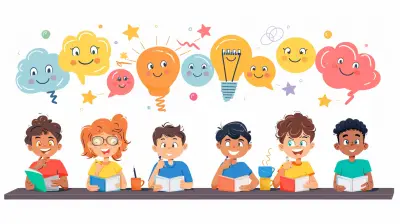The Benefits of Outdoor Learning: Bringing the Classroom Outside
6 September 2025
Ever felt like the walls of a classroom were just a bit too… well, wall-ish? You’re not alone. Traditional learning environments have their place, but there’s something magical about stepping outside, breathing fresh air, and flipping the script on how and where we teach and learn. That’s where outdoor learning comes in—a breath of fresh air in more ways than one.
In this article, we’ll dive deep into the benefits of outdoor learning and why more schools and educators are ditching the desks and heading out the door. Whether you're a teacher, a parent, or just someone curious about alternative education methods, you'll find plenty of insight here.
What Exactly Is Outdoor Learning?
Let’s start simple. Outdoor learning is pretty much what it sounds like—taking the classroom outside. But don’t confuse it with just having a class picnic!Outdoor learning includes structured lessons, hands-on activities, and real-world experiences conducted in natural or outdoor settings. Think science classes in the forest, math challenges in the schoolyard, or storytelling under a tree. It’s all about using the outside world as both a backdrop and a teaching tool.
Why Is Outdoor Learning Gaining Popularity?
Remember when education was all about chalkboards and memorization? Yeah, times have changed. And thankfully, so has our understanding of how kids learn best.As we continue to understand the importance of mental health, experiential learning, and real-world skills, outdoor education is stepping into the spotlight. It's fun, it's flexible—and best of all—it's effective.
So why is everyone talking about it?
- It's engaging.
- It's proven to boost academic performance.
- It’s great for health—physical and mental.
- It nurtures a love for nature and sustainability.
Let’s unpack these benefits a bit more.
1. Increases Student Engagement
You know that glazed-over look students get after sitting for too long in a classroom? Say goodbye to that.Outdoor learning grabs attention like nothing else. Nature is full of surprises—birds chirping, leaves rustling, clouds shifting. It naturally sparks curiosity and keeps students engaged without needing flashy tech or complicated tools.
When students are curious, they’re more likely to ask questions, participate, and—most importantly—remember what they’ve learned. Win-win.
2. Boosts Academic Performance
You might be thinking, “Can learning outside actually improve grades?” Surprisingly, yes!Research has shown that students who participate in outdoor education perform better in core subjects like math, science, reading, and writing. Why? Because outdoor learning allows them to apply their knowledge in real-world contexts.
For example:
- A science class might study plant life by actually examining leaves and insects.
- Math lessons could involve measuring tree heights or calculating distances during a nature walk.
When learning becomes hands-on and meaningful, it sticks.
3. Supports Mental Health and Well-being
Let’s be real—we all need some fresh air sometimes. And for kids, especially in today’s fast-paced, digital world, connecting with nature can be a game-changer.Spending time outdoors has been linked to reduced stress, anxiety, and depression in children. It gives students a chance to:
- Move their bodies
- Breathe clean air
- Focus without screens
- Practice mindfulness
In short, being outside helps students feel more grounded, calm, and ready to learn.
4. Builds Real-World Skills
Life doesn’t happen inside a classroom, and neither should all our learning.Outdoor learning fosters essential life skills that traditional classrooms can’t always teach—think collaboration, problem-solving, resilience, and creativity.
Imagine a group of students working together to build a shelter during a survival-themed lesson. They're not just learning about physics or design; they're learning how to communicate, delegate, and adapt. These are the types of skills that stick with you long after the test is over.
5. Encourages Environmental Stewardship
You can’t care about what you don’t understand. And you won’t protect what you don’t care about.One of the most powerful outcomes of outdoor learning is that it creates a strong connection between students and the environment. When kids spend time outdoors, they start to notice things—the texture of tree bark, the sound of birds, the way flowers bloom in spring.
That awareness turns into appreciation. And that appreciation? It often grows into responsibility.
Outdoor learners are more likely to become environmentally conscious adults. And in a world facing climate change and ecological crises, that's a pretty big deal.
6. Helps Different Types of Learners Shine
Every student learns differently. Some absorb information best by reading. Others need to hear it, see it, or—better yet—do it.Outdoor learning caters to all kinds of learners, especially kinesthetic and visual ones. It allows for movement, exploration, and hands-on activities that bring lessons to life.
Plus, for students who struggle in traditional settings—like those with ADHD or learning differences—outdoor education can be a total game-changer. The natural environment reduces distractions and helps them focus in ways a classroom can’t.
7. Fosters Creativity and Imagination
Want to boost creativity? Get outside.Nature is one giant inspiration machine. When kids are given the space to roam, imagine, and play, their brains light up in ways that rigid classroom structures just can’t compete with.
A stick becomes a magic wand. A rock transforms into a spaceship. That fallen log? A pirate ship. Outdoor learning creates opportunities for open-ended play and storytelling, which are critical for developing imagination and original thinking.
8. Promotes Physical Activity
Let’s face it: kids don’t move enough during the school day.Outdoor learning naturally incorporates physical activity, whether it's through hiking, gardening, or simply walking from one activity to another. Movement boosts circulation, wakes up the brain, and releases feel-good chemicals like endorphins.
And, of course, staying active is crucial for long-term physical health. So it's not just about sharper minds—it's about stronger bodies too.
9. Encourages Risk-Taking and Confidence
Climbing a tree. Building a fire. Leading a group discussion outdoors.These kinds of activities involve a bit of risk—and that’s a good thing. Appropriate risk-taking helps students build confidence, learn their limits, and trust themselves. It pushes them to step outside their comfort zones while still being in a safe, supervised environment.
Over time, students develop a growth mindset. They learn that messing up isn’t failure—it’s part of learning.
10. Strengthens Teacher-Student Relationships
The teacher-student dynamic changes when you move outside. That hierarchical classroom structure softens a bit. Teachers become facilitators, mentors, and co-explorers rather than authority figures at the front of the room.This shift fosters deeper relationships and mutual respect. Students feel seen, heard, and valued. And when students trust their teachers, they’re more willing to engage, take risks, and express themselves.
How Schools Can Start Implementing Outdoor Learning
Feeling inspired? Good! But how do you bring this concept to life?The good news is, you don’t need a forest or a fancy nature center. Outdoor learning can happen in:
- Schoolyards
- City parks
- Community gardens
- Local hiking trails
- Even the school’s parking lot on a sunny day!
Here are a few simple ideas to get started:
- Nature Journals: Let students document what they see, hear, and feel outside.
- Science Walks: Identify plants, birds, or insects during a stroll.
- Outdoor Reading Time: Bring books or storytime to the playground.
- Math in the Wild: Use sticks, rocks, or chalk for measuring, counting, and geometry.
- Team Challenges: Organize problem-solving games in open spaces.
It doesn’t have to be all or nothing—even a once-a-week lesson outdoors can make a difference.
Addressing Concerns About Outdoor Learning
Of course, there are always challenges. What about weather? Safety? Curriculum requirements?These concerns are valid but not impossible to overcome.
- Weather: Invest in proper outerwear or create sheltered outdoor spots.
- Safety: Establish guidelines and clear boundaries. Supervision is key.
- Curriculum: Align outdoor activities with existing learning goals. Many lessons can be adapted to the outdoors with a little creativity.
The goal isn’t perfection. The goal is progress.
Final Thoughts
At its heart, outdoor learning is about reimagining what education can look like. It’s about trading rows of desks for open skies, textbooks for tree bark, and passive learning for vibrant, lived experiences.The benefits are as vast as the outdoors themselves—engagement, achievement, well-being, creativity, confidence, and so much more. And whether it’s a full-day field trip or a 20-minute outdoor reading session, every step outside is a step toward better learning.
So, next time you feel stuck indoors, ask yourself: What could I teach—what could I learn—if I just stepped outside?
all images in this post were generated using AI tools
Category:
Teaching StrategiesAuthor:

Eva Barker
Discussion
rate this article
1 comments
Zephira Jackson
What an intriguing perspective on outdoor learning! I’m curious about how engaging with nature impacts students’ creativity and problem-solving skills. Are there specific activities or settings that yield the most benefits? It would be fascinating to explore how different environments influence learning outcomes. Thanks for highlighting this important topic!
September 20, 2025 at 3:18 AM

Eva Barker
Thank you for your thoughtful comment! Engaging with nature can significantly enhance creativity and problem-solving skills. Activities like nature walks, scavenger hunts, and outdoor projects often yield the best results. Different environments, such as forests or gardens, can further enrich learning experiences. I appreciate your interest in this important topic!


